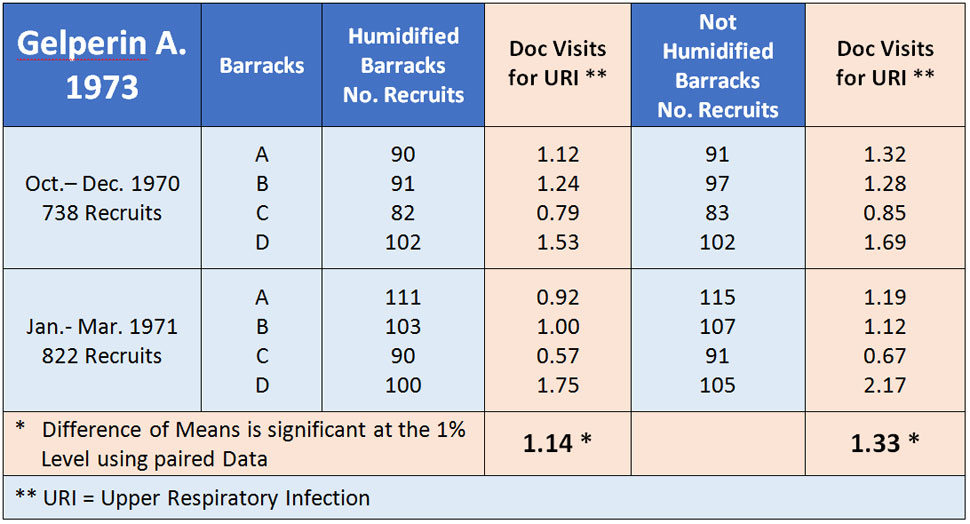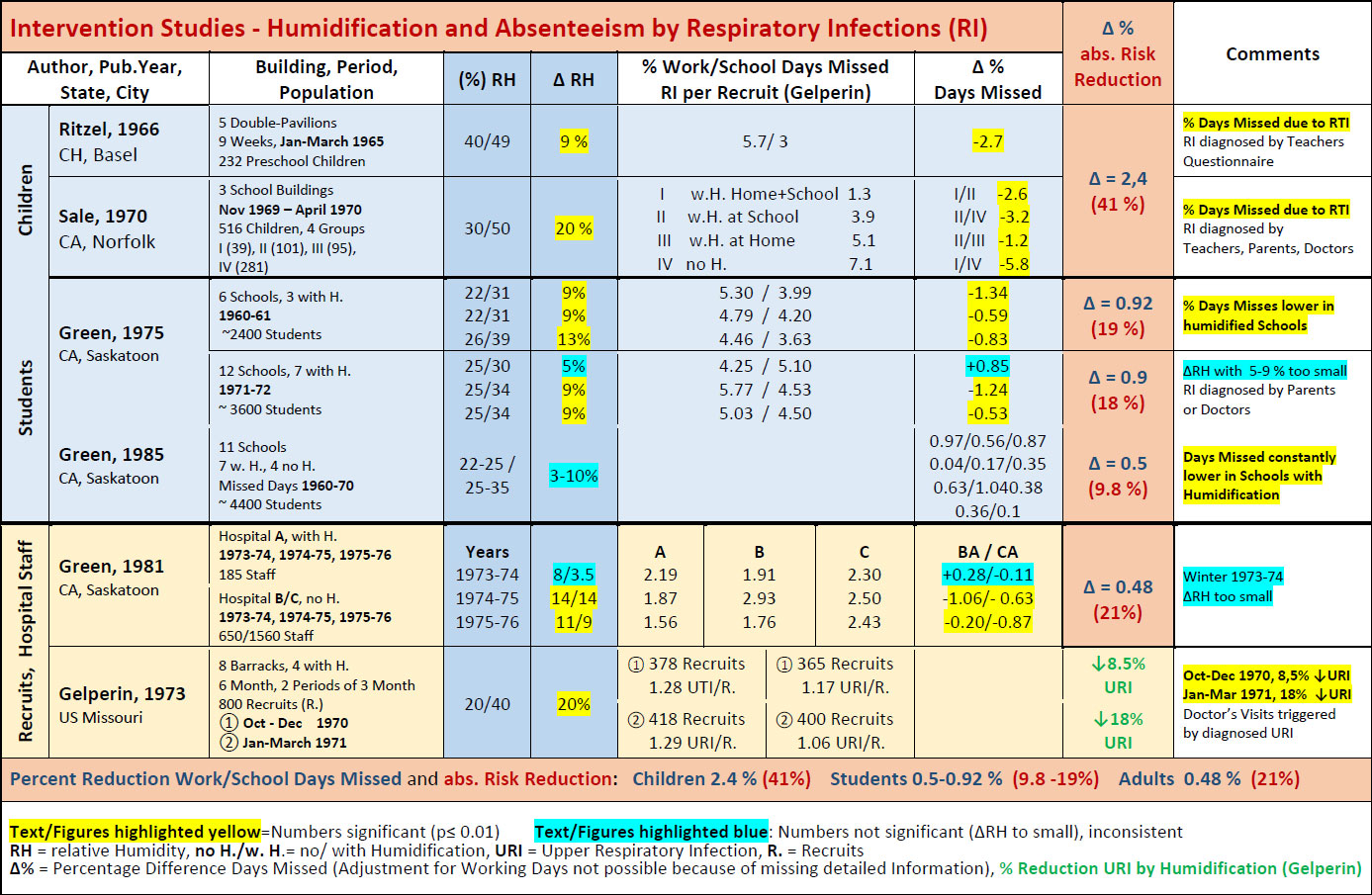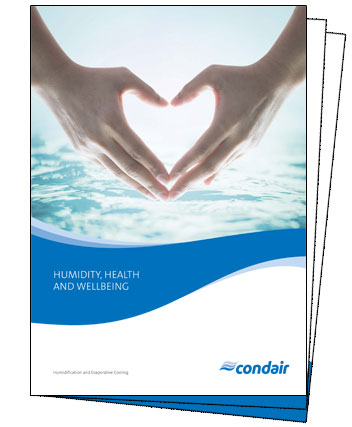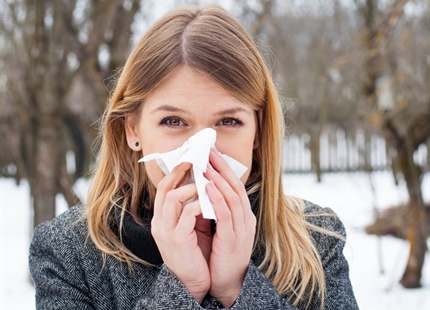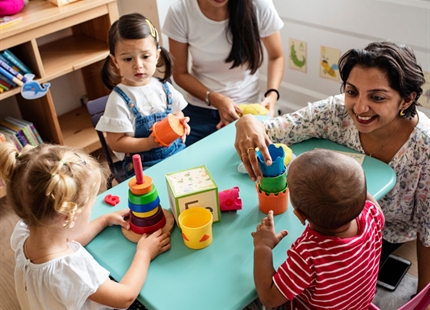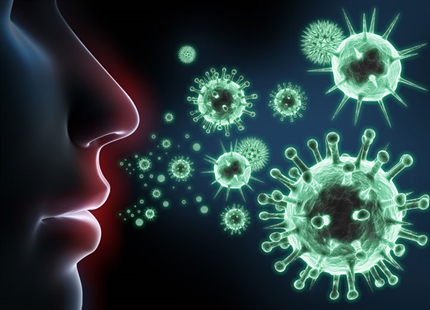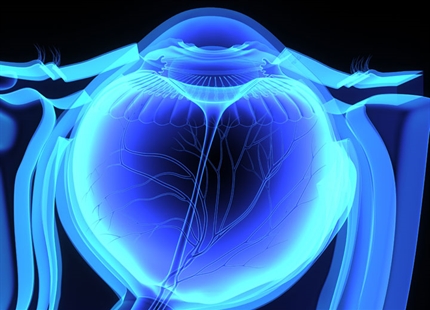Published: Mar 1973 | Heating, Piping and Air Conditioning, Vol. 45, No.3
Humidification and Upper Respiratory Infection Incidence
Gelperin A
Abstract
This retrospective cohort study compared the incidence of upper respiratory infections of two groups of Army recruits, which were accommodated in barracks of identical construction and ventilation.
The barracks of one group were humidified to 40%RH ±5%, while the other barracks had no humidity control and had an average humidity level of 20%RH ±8%.
The study compared the incidence of upper respiratory infections (diagnosed by the Army physician) in the two groups. The inquiry was done in two time periods, 19. Oct. to 19 Dec. 1970 (738 recruits) and 11 Jan. to 20 March 1971 (822 recruits).
The average incidence of upper respiratory infections per trainee was 1.14 in the humidified and 1.33 in the non-humidified group. The incidence of gastro-intestinal, genito-urinary, skin, laceration-contusion or psychological illnesses/disabilities were identical.

